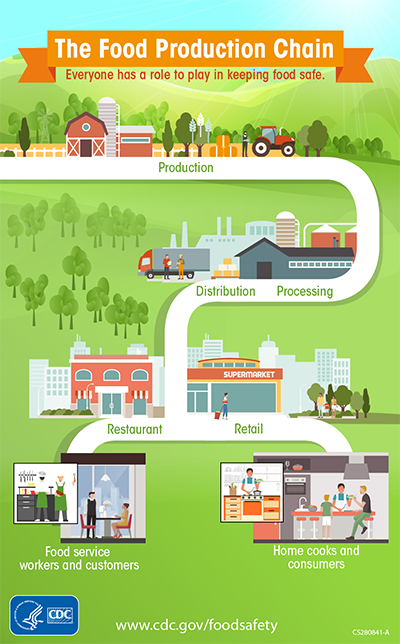In recent years, the agricultural sector has witnessed a digital revolution, with technological advancements transforming the way we grow, harvest, and distribute food.In this article we will present you how blockchain in agriculture is providing a shorter and more secure supply chain, ensuring consumers have access to safe and sustainably sourced food and agricultural resources.
The challenge of traditional supply chains
Traditional supply chains in the food industry have long been plagued by opacity, making it challenging for consumers to fully trust the products they buy. The journey of food from the farm to our plates often involves multiple intermediaries, each with their own record-keeping systems. This complexity can lead to inefficiencies, inaccuracies, and even food fraud. Blockchain in agriculture addresses these issues head-on by creating a decentralized and tamper-resistant ledger.

How Blockchain Works in Agriculture
At its core, Agricultural blockchain is a digital ledger that records transactions in a transparent and immutable way. In agriculture, this technology tracks each step of the food supply chain, from planting the seed to the final point of sale. Every piece of information, such as production dates, quality checks, and transportation data, is securely recorded in a “block.” Once added, these blocks form a chain of information, ensuring a complete and verifiable history of the product on one place .
Ensuring Food Safety
One of the most critical benefits of blockchain in Agriculture is enhanced food safety. In case of contamination or a foodborne illness outbreak, the blockchain system allows for rapid tracing of the affected product’s origin. This ability to pinpoint the exact source of the problem enables quick recalls and minimizes the potential harm to consumers. As a result, the trust between consumers and producers is strengthened

Empowering Sustainable Practices
With the growing concern for environmental sustainability, consumers demand greater transparency in the agricultural practices used to produce their food. Blockchain technology enables farmers and producers to showcase their commitment to sustainability by documenting eco-friendly initiatives, such as reduced water usage, organic farming methods, and fair labor practices. Consumers can now make informed choices, supporting businesses that align with their values.

Eliminating Food Fraud
Food fraud , the act of deliberately mislabeling or misrepresenting food products, has been a longstanding issue in the industry. By utilizing blockchain’s incorruptible ledger, the authenticity of food products can be verified at each stage of the supply chain. This significantly reduces the possibility of counterfeit products reaching the market, safeguarding consumers from deception.

Empowering Small-Scale Farmers
Blockchain in Agriculture not only benefits consumers and larger agricultural players but also empowers small-scale farmers in developing regions. By providing transparent access to markets and fair pricing, blockchain opens new opportunities for small farmers to compete on a global scale. This inclusivity has the potential to uplift entire communities and contribute to poverty reduction.

Weather crisis
Farmers usually have to confront unpredictable weather conditions while growing different types of crops.Smart agriculture enables farmers to understand the crop’s behavior by deploying sensors and mapping fields. Placing agricultural weather stations within the farms can help generate crucial information such as : soil temperature at different heights, air temperature, leaf wetness, rainfall , wind speed, dew point temperature, relative humidity, solar radiation and much more.
Farmers can take preventive actions
By analyzing the data generated by the weather station, farmers can take necessary actions in advance in the field.
Limitations
Despite enormous potential advantages, fundamental limitations remain for applying blockchain technology in the agriculture and food sectors.
First, further research is required on the transacting parties’ motivation to provide genuine and precise information to the blockchain ledger. This might be especially important in the case of smallholder farming. The information generated in the farming process is scattered and owned by individual farmers. Blockchain technologies’ benefits for farmers might be dependent on the size of the farm. On the one hand, smaller farms could easily participate in a blockchain-based insurance market. On the other hand, collecting and integrating on-farm data might be more convenient for larger farms. Thus, future research should try to anticipate which farms could benefit an which could lose from the introduction of blockchain-based solutions.

Second, obtaining the data uploaded to a blockchain can be very costly, which will be a barrier to the adoption of blockchain technology in the sector. The setup of distributed ledger itself may be relatively cheap, whereas collecting data required for making the ledger useful, e.g., DNA of livestock animals could be expensive. Sampling can reduce the cost, but it requires that the population of products for data collection is large. This means the average cost of data collection is lower for larger farms than smaller ones, which raises the concern of increasing the income discrepancy.
Third, blockchain does not directly seamlessly integrate with existing legacy systems. In order to be successfully implemented, the technology needs to be plugged into an existing database and legacy systems such as enterprise resource planning, warehousing management and manufacturing execution systems. Building an infrastructure to use the blockchain technology is often time-consuming. The middleware and communication protocol that can glue existing systems will be key
Conclusion
Blockchain technology’s integration into the agricultural sector brings forth a new era of transparency and traceability for the food industry. Through this decentralized and tamper-proof system, consumers gain confidence in the products they purchase, while farmers and producers are incentivized to adopt sustainable and ethical practices. As this innovative technology continues to evolve, it has the potential to revolutionize how we perceive, consume, and support agriculture, leading to a more sustainable and secure food future for all.The global agriculture industry is now worth over 2.5 trillion dollars and has over one billion people involved worldwide. Now, more than ever, there is an opportunity for innovation

